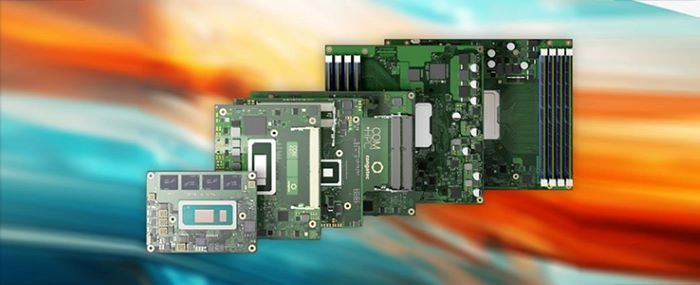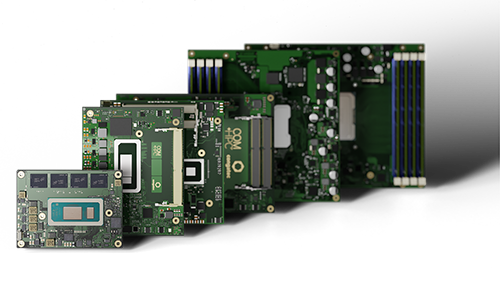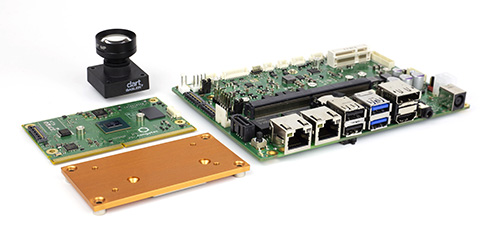
Choosing the appropriate Computer-on-Module standard Performance class is your guide
If you look back over the last two decades, there was a motley of options in the early days of Computer-on-Modules. To start off with, many manufacturers tried to establish their concept on the market and stand out by differentiating the form factor. However, going it alone was difficult in a market that was still young and had many smaller players. Customers were demanding uniform standards to gain greater design security and enable second sourcing. This initially led to the formation of small alliances and consortia to establish individual form factors such as DIMM-PC or ETX. But to establish full acceptance among users, the efforts ultimately resulted in the development of independent standards, which are now hosted by the standardization bodies PICMG and SGET. This made the selection of a suitable standard much easier.
Spoilt for choice
Nevertheless, there is still a colorful variety of form factor standards today as a result of technological developments. Looking just at client systems with integrated graphics support, the choice ranges from Qseven, µQseven and SMARC to COM Express Basic, Compact and Mini in Type 6, as well as COM Express Basic, Compact and COM-HPC in Mini, Size A, B and C. In addition, there are COM Express in Type 7 and COM-HPC in Size D and E as headless systems for embedded and edge server designs.
Developers therefore have a variety of options today if they want to use an application-ready plug-in Computer-on-Module for their dedicated systems. Alternatively called Server-on-Modules or Client-on-Modules, with the Arm processor world commonly speaking of System-on-Modules, all these terms stand for the same principle: The computing core comes as a bootable component with full software support for all interfaces specified in the standard. With the appropriate evaluation boards, developers can immediately implement their application, while the dedicated carrier board and its system integration are developed in parallel. This is easier compared to full-custom design, as the standards’ design guides provide many valuable suggestions and a rich ecosystem of IP and components is available Commercial Off-The-Shelf (COTS).
COM-HPC will dominate the high-performance classes

COM-HPC is THE high-performance Computer-on-Module standard for modular edge server and edge client designs. The smallest size Mini is hardly larger than a credit card.
The agony of choice today is limited, however. The COM-HPC standard from the PICMG specifies an immensely broad ecosystem that will completely dominate the next generation of high-performance embedded and edge computing applications. New high-end designs of any form should therefore rely on COM-HPC, regardless of whether it concerns dedicated high-performance edge servers or edge clients. As a predecessor standard, COM Express is only recommended for existing designs to save NRE investment when higher performance is not required. Otherwise, the recently introduced COM-HPC Mini standard provides a very efficient migration path for COM Express Compact designs, which was not previously available.
Measuring 95x120 mm (11,400 mm²) and previously the smallest COM-HPC standard, COM-HPC Size A was still almost 32% larger than COM Express Compact, which measures 95x95 mm (9,025 mm²). From a footprint standpoint, that’s 25 mm too wide to migrate existing COM Express designs to COM-HPC. Since COM Express Compact is the most widespread COM Express form factor and only the high-end currently still uses the even larger COM Express Basic form factor, many developers faced considerable challenges – if only in terms of system design dimensions. But smaller always fits. That’s why COM-HPC Mini with its 95x70 mm is a real liberator, opening up entirely new perspectives for the many ultra-compact system designs in particular.
SMARC is predestined for low-power and low-cost designs

SMARC is the low-power form factor for Arm and x86 processors that enables highly compact designs with low-cost edge card connectors. The kit pictured here is an NXP i.MX8 Plus based SMARC module with carrier, heatspreader and Basler camera.
But can COM-HPC really cover everything? In theory, the answer is yes. But reality looks different because besides PICMG, there are also the SGET standards, which primarily target low-power processing. Among the SGET standards, SMARC is often given priority over Qseven because the connector is newer, the pin count is larger, and the form factor is smaller. However, designs using the edge connector, whether Qseven or SMARC, are invariably less expensive than those using the PICMG standard. The expectation therefore is that small form factor designs with low-power processors will prefer this standard, and that COM-HPC Mini will not really be able to penetrate this market segment completely. Nevertheless, any application that requires high-performance in a small form factor is better off with COM-HPC Mini. Selecting the right form factor has therefore become much easier. Only when it comes to choosing between SMARC and COM-HPC Mini are things more difficult. However, in cases where the target device requires a low-power or low-cost design instead of compact high performance, the design decision is also easy. And as far as standards are concerned, one thing is certain: The embedded community will continue to support the full range of available standards. So, new designs are well served with either COM-HPC or SMARC.
What’s the difference between COM-HPC and COM Express? Watch this video to find out!
Video link: https://www.youtube.com/watch?v=FFPqFihtTiY
About congatec
congatec is a rapidly growing technology company focusing on embedded and edge computing products and services. The high-performance computer modules are used in a wide range of applications and devices in industrial automation, medical technology, transportation, telecommunications and many other verticals. Backed by controlling shareholder DBAG Fund VIII, a German midmarket fund focusing on growing industrial businesses, congatec has the financing and M&A experience to take advantage of these expanding market opportunities. congatec is the global market leader in the computer-on-modules segment with an excellent customer base from start-ups to international blue chip companies. More information is available on our website at www.congatec.com or via LinkedIn, Twitter and YouTube.
All trademarks are property of their respective owners.
Reader Enquiries:
congatec
Phone: +49-991-2700-0
info@congatec.com
www.congatec.com
